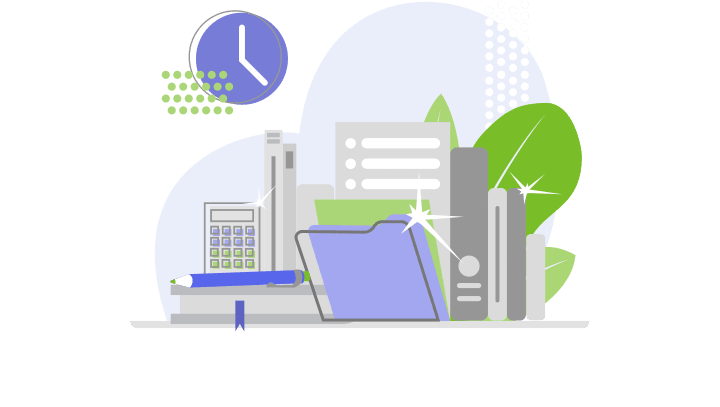The principle prevents overstating or exaggerating the value of an asset in the balance sheet. For some types of assets with readily available market values, standards require that the carrying value of an asset (or liability) be updated to the market price or some other estimate of value that approximates current value (fair value, also fair market value). Accounting standards vary as to how the resultant change in value of an asset or liability is recorded; it may be included in income or as a direct change to shareholders’ equity. The majority of assets are reported based on their historical cost, but one exception is short-term investments in actively traded shares issued by public companies (i.e. held-for-sale assets like marketable securities). Historical cost is the original cost of an asset, as recorded in an entity’s accounting records. Many of the transactions recorded in an organization’s accounting records are stated at their historical cost.
In the case where the value of an asset has been impaired, such as when a piece of machinery becomes obsolete, an impairment charge MUST be taken to bring the recorded value of the asset to its net realizable value. One of the key financial statements is the balance sheet, which shows the assets, liabilities, and equity at the end of the most recent reporting period. The historical cost concept implies that the balance sheet represents a historical record of past transactions and their impact on assets, liabilities, and equity. This means that the amounts shown are unlikely to approximate market values. If an asset was purchased on the balance sheet date 10 years ago, then it may well be market value, but it is the market value at that point in time. The historical cost principle states that a company or business must account for and record all assets at the original cost or purchase price on their balance sheet.
Historical Cost vs. Market Value (FMV)
However, if it is expected that the inventory will need to be sold at a loss, then the amount on the balance sheet will be written down to the expected recoverable amount, to reflect this fact. So generally, with assets, decreases in value are recorded, whereas increases are not. Historical cost is a key accounting concept that applies to the balance sheet generally, one of the three key financial statements prepared by a business.
The conservatism principle in accounting dictates that estimates, uncertainty, and financial record-keeping should be done in a manner that does not intentionally overstate the financial health of an organization. Historical cost is one way of adhering to the conservatism principle, as companies must report certain assets at cost and have a more difficult time exaggerating the value of the asset. Historical cost includes the purchase price of an https://www.kelleysbookkeeping.com/loan-received-from-bank-journal-entry/ asset, plus any other costs incurred to bring the asset to the location and condition needed to make it function as intended. This can include a number of additional costs, including transport costs, freight in, the cost to demolish existing structures and install a concrete pad for the asset, and test it to ensure that it functions as intended. Historical cost basis of accounting fails to account for the true economic cost of using assets.
Many accounting standards require disclosure of current values for certain assets and liabilities in the footnotes to the financial statements instead of reporting them on the balance sheet. Variable real value non-monetary items, e.g. property, plant, equipment, listed and unlisted shares, inventory, etc. are valued in terms of IFRS and updated daily. In accounting, the historical cost of an asset refers to its purchase price or its original monetary value. Based on the historical cost principle, the transactions of a business tend to be recorded at their historical costs.
It is also used to determine the basis of potential gains and losses on the disposal of fixed assets. An asset’s market value can be used to predict future cash flow from potential sales. A common example of bookkeeper duties mark-to-market assets includes marketable securities held for trading purposes. As the market swings, securities are marked upward or downward to reflect their true value under a given market condition.
Everything You Need To Master Financial Modeling
This concept is clarified by the cost principle, which states that you should only record an asset, liability, or equity investment at its original acquisition cost. A historical cost can be easily proven by accessing the source purchase or trade documents. Without necessary adjustments, the historical price of an asset is still reliable, although not entirely useful in the long term. Knowing that a company might have bought an office building for $5,000, years ago, does not provide an overview of the current fair value of an asset. As such, the fair market value of the asset will prove to be more useful; however, since fair market values are up to assumption and are subjective, the Financial Accounting Standards Board (FASB) is adamant on using the historical cost principle, as it is objective and reliable.
- Many of the transactions recorded in an organization’s accounting records are stated at their historical cost.
- Historical cost basis of accounting fails to account for the true economic cost of using assets.
- It would therefore be acceptable for an entity to revalue freehold properties every three years.
From above, we can see that purchases (i.e. CapEx) and the allocation of the expenditure across its useful life (i.e. depreciation) impact the PP&E balance, as well as M&A-related adjustments (e.g. PP&E write-ups and write-downs). Intangible assets are not permitted to be assigned a value until a price is readily observable in the market. One of the prime objectives of accrual accounting is for the public markets to remain stable – but within reason, of course (i.e. reasonable volatility). Over 1.8 million professionals use CFI to learn accounting, financial analysis, modeling and more. Start with a free account to explore 20+ always-free courses and hundreds of finance templates and cheat sheets.
Historical cost definition
The concept is in conjunction with the cost principle, which emphasizes that assets, equity investments, and liabilities should be recorded at their respective acquisition costs. Under the historical cost principle, most assets are to be recorded on the balance sheet at their historical cost even if they have significantly increased in value over time. For example, marketable securities are recorded at their fair market value on the balance sheet, and impaired intangible assets are written down from historical cost to their fair market value.
AccountingTools
The value of an asset is likely to deviate from its original purchase price over time. An example would be the acquisition of a block of offices valued at $5,000,000. The acquisition was made 15 years ago; however, in the current market, the building is worth over $12,000,000.
Under the historical cost principle, often referred to as the “cost principle,” the value of an asset on the balance sheet should reflect the initial purchase price as opposed to the market value. Marketable securities are highly liquid assets meaning they can be easily converted to cash at no loss of value. Marketable securities are included in all liquidity ratios as they are seen as “spare cash”. They are recorded at their fair value in the balance sheet and not at their historical cost.
…






